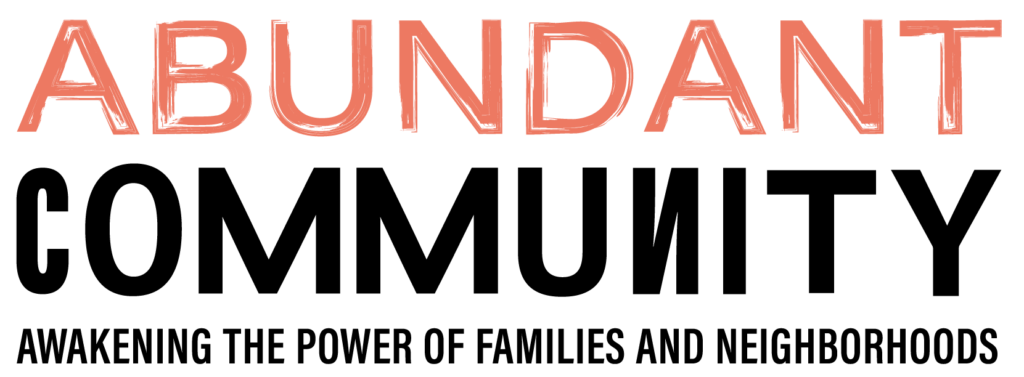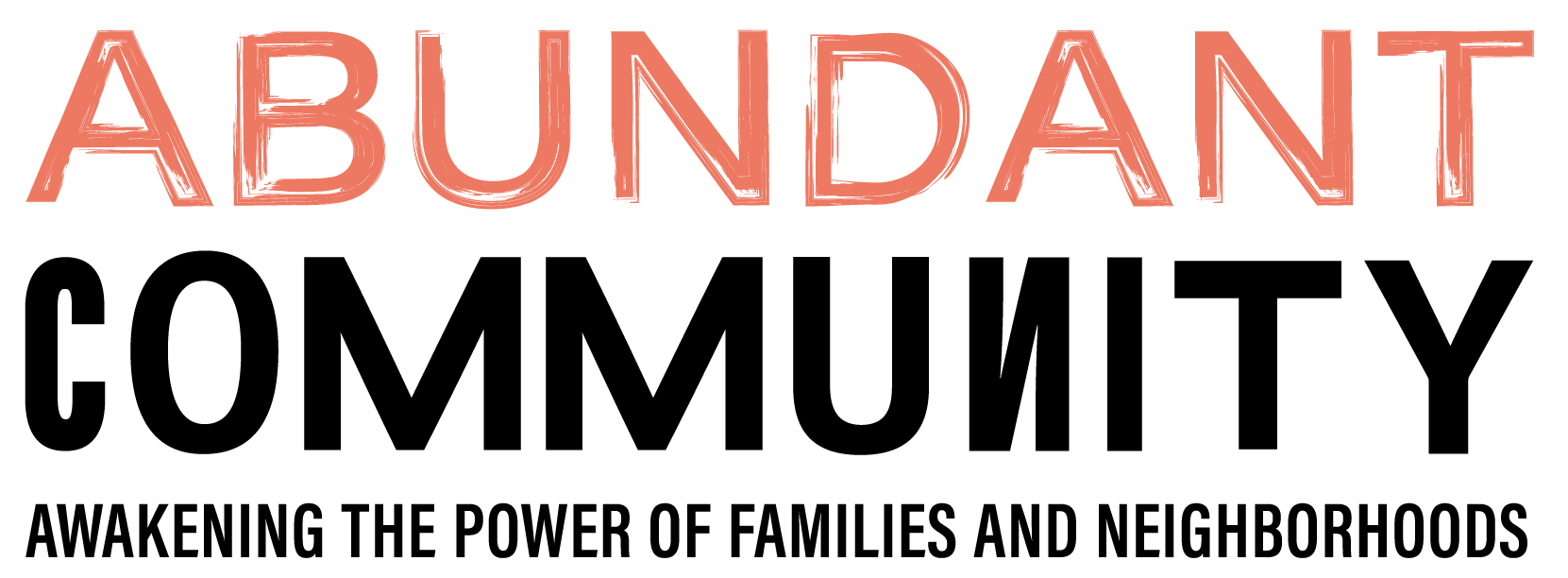As the holidays unfurl, bringing hopes and promises of special flavors, cozy traditions and connection, an urgency also begins to brew within our minds and homes: to buy.
At our best, we buy out of our desire to concretely demonstrate our love for others.
But what is the cost of our modern holiday buying habits? How can we hold onto our traditions of gift-giving without causing the waste and impact that comes with purchasing new items? And in exploring these questions, how might we make our holidays even more meaningful, personal and authentic?
In the following podcast, writer Annaliese Griffin shares a habit she has formed intentionally in her household and gift-buying practices to show her love for friends and family without participating in the more costly of modern consumerism.
In the comments, please share below what habits and traditions you have come up with for keeping the holidays rich with love for the people in our lives as well as love for the greater good and our common future.
Also, you may enjoy following this podcast with a listen to Tom Lehrer’s comical “Christmas Carol.”
Transcript:
MARY LOUISE KELLY, HOST:
The American economy wants you to buy, especially at this time of year.
(SOUNDBITE OF ARCHIVED RECORDING)
UNIDENTIFIED PERSON #1: This Cyber Monday is your last chance to score big online.
UNIDENTIFIED PERSON #2: Fragrances they’ll fancy, eyeshadows they’ll adore.
UNIDENTIFIED PERSON #3: All the brands they want. All the savings you love.
UNIDENTIFIED PERSON #4: Save on a gift that says it all.
KELLY: This year, the holiday shopping push comes as inflation is rising, so things cost more and as supply chain disruptions make it hard for Americans to get what they want. That is why we’ve been spending some time this week talking about consumerism, how the U.S. economy depends on our buying stuff and the impact of all that stuff on an ever-warming planet. Today we’re going to talk to someone who has made a deliberate choice not to buy anything new for the holidays. Annalise Griffin is an independent journalist. She wrote about this commitment for The New York Times. Hi there.
ANNALISE GRIFFIN: Hello. Thank you for having me.
KELLY: So what are the parameters on this promise? Are you really not going to buy anything new for the holidays?
GRIFFIN: No, that’s not quite true. I always buy my chocolate new, and there needs to be plenty of that.
KELLY: (Laughter) That doesn’t tend to weather the year that well.
GRIFFIN: No, it doesn’t. And I did buy my daughter a hoodie that is lined with fluffy fleece because it was a very specific request, and it is something that she needs. And we do live in Vermont. And I looked in three used places and couldn’t find one, so Land’s End kids got my money.
KELLY: Walk me through how and why you first started on this promise not to buy new stuff for the holidays.
GRIFFIN: My husband and I got tired of picking an item off of a list for each other, wrapping it up and putting it under the tree as though it was a surprise.
KELLY: Yeah.
GRIFFIN: It just felt really unsatisfying. And we live in a town where we have a wonderful thrift shop that we both go to, you know, once, sometimes twice a week. So we decided that we would just keep an eye out for something that spoke to us about the other person and buy that as a gift. Because, you know, we just – we’re adults. We buy the things we want for ourselves. But it’s – to not have that sort of element of surprise and delight just felt like it was counter to the whole point of getting gifts.
And it’s expanded from there because we have a great infrastructure for secondhand things. And, you know, there’s a budget component to it, of course. But it also just feels like it embraces the kind of abundance that’s around us. There’s so much stuff. And if you just connect to other people – and there are many ways to do that in my community. There’s buy nothing groups. There’s a parents community closet where you can go and, you know, shop for free. And there’s also secondhand stores galore.
KELLY: Well, and it’s so interesting. You’re talking about this as satisfying, as a pleasure, that it takes more work. But it also sounds like it’s been liberating.
GRIFFIN: Yeah. And that’s what on a couple of different levels for us. You know, when you have small kids, your house fills up with their junk. And so finding a place for it to go without feeling like we are just cycling through this mountain of stuff that goes along with being a parent of small children in the U.S. has really made me aware of stuff. And being able to recycle it back into my community and then to get things for free from my community has been, you know, very liberating. But also, in our household, it’s allowed us to work less because we spend less. We don’t have a ton of stuff. We don’t buy everything new.
KELLY: So it sounds – just to be totally clear – you’re not opposed to buying something. You’re not opposed to bringing in new things into your house. You’re just not buying anything new. You’re looking secondhand.
GRIFFIN: Yeah. You know, there’s sort of like two lines of thought around consumerism for me, and one of them is that I’m always working on. And, you know, a thing I struggle with myself is like how to actually chip away at the core consumerism, like, how to buy fewer things, how to have fewer things around you. But I’m not a minimalist. You know, I don’t think that chipping away at consumerism and trying to reduce it has to be at odds with your aesthetic or with the idea of beauty and surrounding yourselves with joy. So there’s that part of it, and I do struggle with that a little bit because I shop at the thrift store a lot, and new things come into our house pretty frequently.
KELLY: So let me let you respond to the pushback that I would get if I launched this program in my house. You mentioned you have kids. I have kids. My kids have always got their eye on the new hip, shiny thing that all their friends are asking for. How do your kids respond to secondhand gifts?
GRIFFIN: I mean, for now, it’s what they’ve grown up with, and so they accept it. But I will also say that my kids – one will be 4 on Friday and the other is 6. And we have Netflix. They don’t see the same kind of commercials that I saw growing up. But I suspect that that’s coming. I suspect that we are going to have to start having conversations about that.
KELLY: Yeah. So a watch and wait on your on the kids front. With your journalist hat on, I mean, you’ve reported this issue out. What did you find about the pressure on – that so many of us feel to buy more and particularly to buy more this time of year?
GRIFFIN: I mean, there’s a very real component to which our consumerism keeps the economy moving forward.
KELLY: Yeah. This has come up over and over again in the discussions we’ve had this week that the American economy – 70% of the GDP is based on consumption. You know, we need to buy more or there are negative consequences for the economy.
GRIFFIN: I mean, I think that one thing that we – is just part of the American psyche is this very all-or-nothing perspective. We’re always like all the way in or all the way out. Just doing this a little bit – like look for a place where you can see that you’re overspending or overexerting yourself and try to not just think about it from this, oh, I owe the planet this, or I need to reduce my consumerism because of this sort of abstract idea of social responsibility, and make it something that actually works better for you, too.
KELLY: I’m also thinking about all the catalogs that come through the door this time of year. I find if I open them, I find a million things that I definitely need and must go buy right away. But if I just don’t open them (laughter) it’s a lot easier.
GRIFFIN: Yes, the same. I do the same thing because I am not some kind of anti-consumer martyr. I also enjoy buying things. And I enjoy looking at catalogs, like looking at the Sears and the J.C. Penney Christmas catalog, that thing that was as thick as a brick and huge when I was a kid was, like, something that I really enjoyed.
KELLY: Totally. Yep. Yep.
GRIFFIN: And so now when I get the catalogs, I throw them away immediately. I – every couple of weeks, I look at my phone. And I look at all of the apps that are designed expressly to get me to buy things, and I dump them in the trash. And then I slowly load them back on. But I also have made a promise to myself that I don’t buy things after 8:00 p.m. or before 8:00 a.m. I am just so susceptible. Like, my ability to make choices at that point of the day is just – it’s done.
KELLY: Some tips and some lived experience there in how we might maybe curb our spending a little bit this holiday season. Journalist Annalise Griffin, thank you so much.
GRIFFIN: Thank you so much for having me.
Originally posted on www.NPR.org.
Image: Yevhen Buzuk


